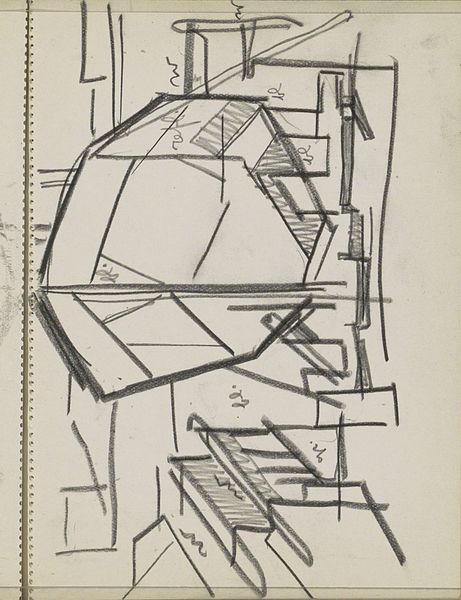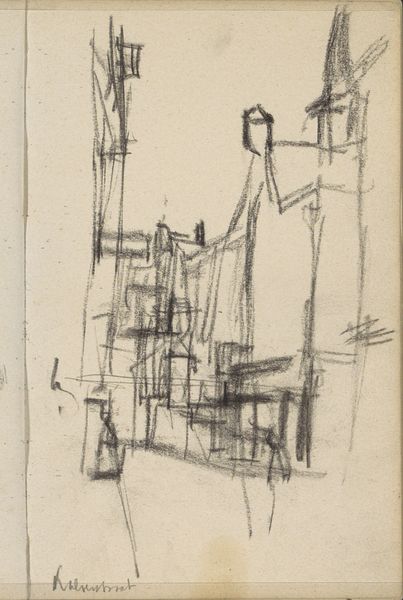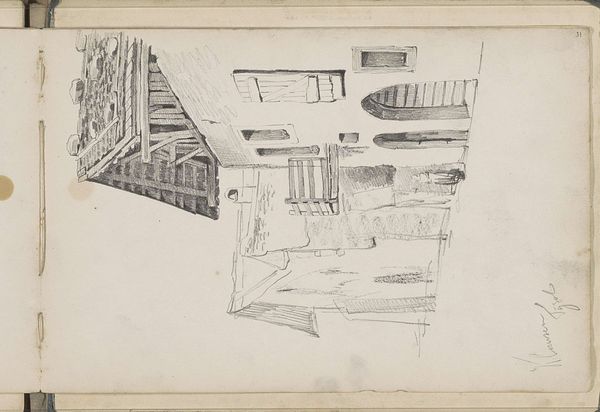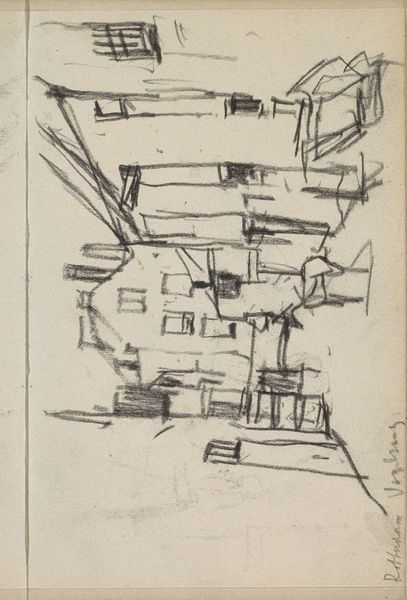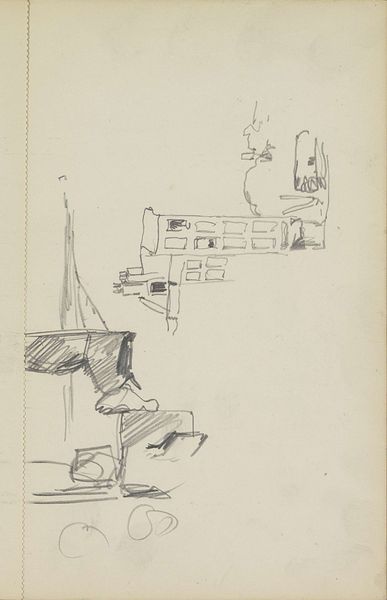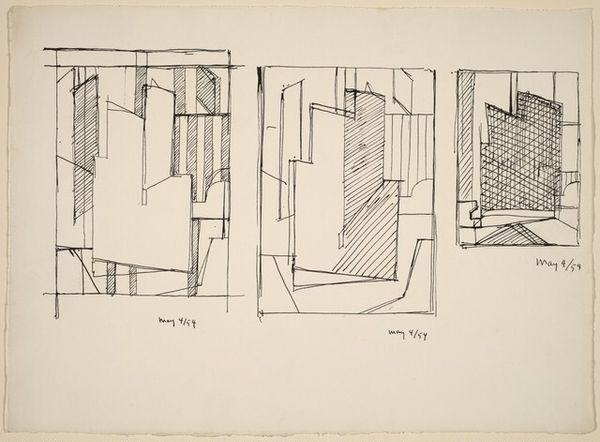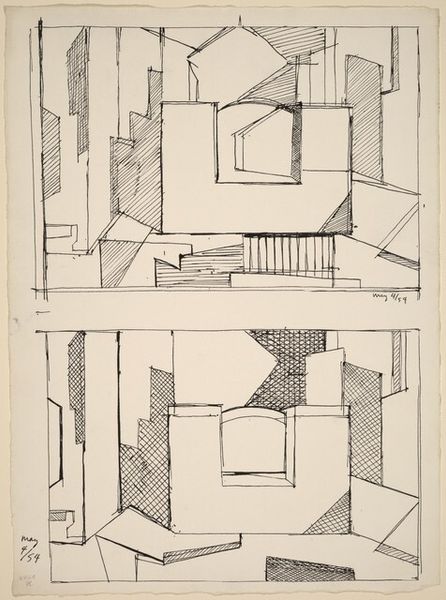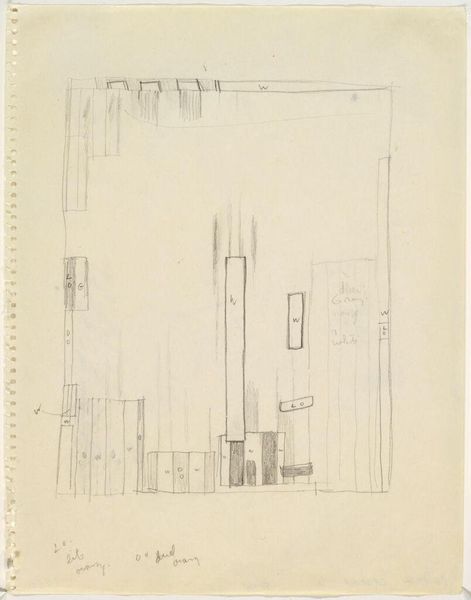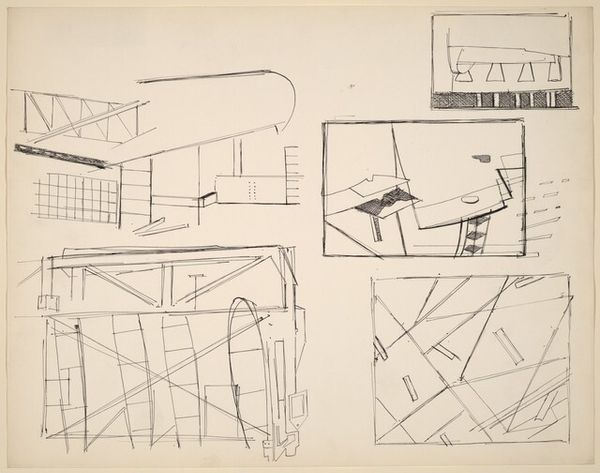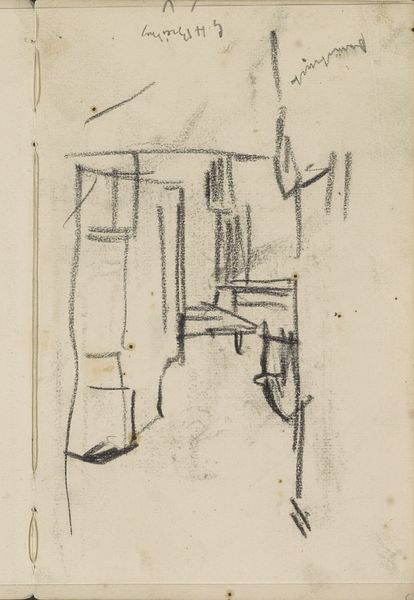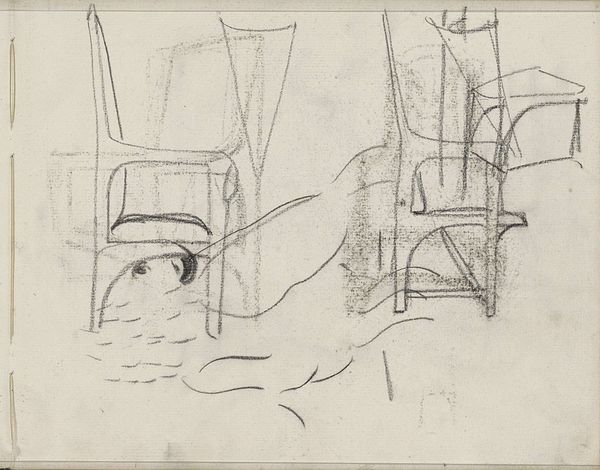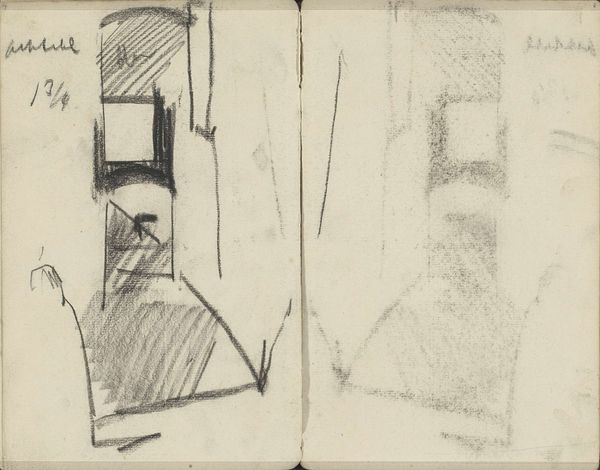
drawing, pencil, graphite
#
drawing
#
aged paper
#
toned paper
#
sketch book
#
personal sketchbook
#
sketchwork
#
geometric
#
pen-ink sketch
#
pencil
#
pen work
#
graphite
#
sketchbook drawing
#
cityscape
#
storyboard and sketchbook work
#
sketchbook art
#
modernism
Copyright: Rijks Museum: Open Domain
Curator: Welcome! We're standing before "Ship on a Slipway," a drawing by Reijer Stolk. It's from sometime between 1906 and 1945 and rendered with pencil, graphite, and ink on toned paper. Editor: My first thought? It feels almost like a blueprint, all angles and skeletal structure. The gray of the paper makes the ship seem… ghostlike, unfinished. Curator: That's fitting, as it gives insight into the construction process—a ship very much in progress. Think about the cultural context: shipbuilding was central to many economies, and seeing it documented this way connects art to industry. It elevates the work of the shipyard. Editor: Absolutely. You can almost smell the wood shavings and feel the rough texture of the materials being used. Stolk clearly was fascinated by process, by the hands-on creation. It breaks down the myth of a solitary artist in their studio and celebrates the collective effort required to produce these magnificent vessels. Curator: And let’s not forget the social dynamics. Shipyards were hubs of intense labor, class interaction, and sometimes conflict. The art captures not only the form of the ship but also suggests, even in absence, the community building it. It mirrors societal growth and development at large. Editor: I’m drawn to the lines themselves, the sketchiness. There’s a deliberate rawness; this isn't polished propaganda but immediate experience. It suggests Stolk valued the unvarnished truth of making. Curator: Yes, a glimpse into the artist's creative thought. While documenting the era’s labor, shipbuilding was evolving technically and organizationally. A detailed artwork such as this acts as evidence of human ingenuity and enterprise, pushing the boundary between utility and art. Editor: I think Stolk highlights a specific period, shifting how art depicts and embodies industrial endeavor. It's far removed from romantic landscape paintings that dominated before, showcasing materiality, labor, and sheer scope like nothing else. Curator: I see this sketch as less about Stolk as an individual genius, but about this drawing giving a voice to broader transformations through the power of material culture during his life. Editor: Exactly. It pulls back the curtain, displaying creation as a layered, material practice. It celebrates work as a key facet of human life. Curator: This way, "Ship on a Slipway" is a remarkable commentary. Editor: Indeed, it makes us see a moment when human craftsmanship shaped technology and altered culture in tandem.
Comments
No comments
Be the first to comment and join the conversation on the ultimate creative platform.
